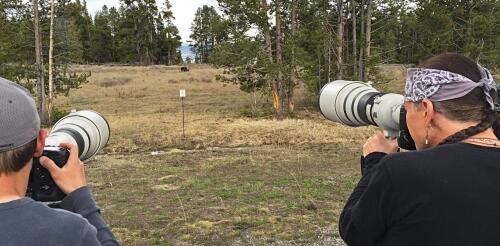Animal welfare
Nearly two-thirds of U.S. households have at least one pet. More than ever before, companion animals are a part of life – particularly in cities, where the majority of Americans live. Cities offer access to many resources, but often it’s not distributed evenly. Some scholars describe parts of U.S. cities with few or no grocery stores as food deserts. Others have identified zones they call transit deserts, where reliable and convenient public transit is scarce or nonexistent. While the “desert” framing is controversial, there is little disagreement that access to goods and services in many U.S. cities is unequal. I have studied urban animal welfare issues for the past 15 years, and I have found that the inequities and economic stress humans face affect animals as well. Recently, University of Nebraska geographer Xiaomeng Li and I explored access to animal welfare services in Detroit. We found that pet resources were significantly more likely to be loca...
It sounds like a crime show episode at sea: In late January 2024, federal regulators learned that a dead female North Atlantic right whale had been sighted near Martha’s Vineyard, Massachusetts. The whale was towed to shore, where more than 20 U.S. and Canadian scientists converged to perform a necropsy, or animal autopsy. On Feb. 14, the U.S. National Oceanic and Atmospheric Administration announced that the whale was #5120 in a catalog that tracks individual right whales. Further, the agency said, rope that had been deeply embedded in the whale’s tail had likely come from lobster fishing gear in Maine. Entanglement in fishing gear is a deadly threat to these critically endangered animals. Scientists estimate that before commercial whaling scaled up in the 18th and 19th centuries, there may have been as many as 10,000 North Atlantic right whales. Today, fewer than 360 individuals remain. Almost 90% of them have been entangled at least once. When whales become en...
One of the biggest privileges of being a primatologist is spending time in remote locations with monkeys and apes, living near these animals in their habitats and experiencing their daily lives. As a 21st-century human, I have an immediate impulse to take pictures of these encounters and share them on social media. Social media can help scientists raise awareness of the species we study, promote their conservation and obtain jobs and research funding. However, sharing images of wild animals online can also contribute to illegal animal trafficking and harmful human-wildlife interactions. For endangered or threatened species, this attention can put them at further risk. My research seeks to find ways for scientists and conservationists to harness the power of social media while avoiding its pitfalls. My colleague, ecologist and science communicator Cathryn Freund, and I think we have some answers. In our view, wildlife professionals should never include themselves in pictures wi...
If you have ever gotten a vaccine or received an intravenous drug and did not come down with a potentially life-threatening fever, you can thank a horseshoe crab (Limulus polyphemus). How can animals that are often called living fossils, because they have barely changed over millions of years, be so important in modern medicine? Horseshoe crab blood is used to produce a substance called limulus amebocyte lysate, or LAL, which scientists use to test for toxic substances called endotoxins in intravenous drugs. These toxins, produced by bacteria, are ubiquitous in the environment and can’t be removed simply through sterilization. They can cause a reaction historically referred to as “injection fever.” A strong concentration can lead to shock and even death. Identifying LAL as a highly sensitive detector of endotoxins was a 20th-century medical safety breakthrough. Now, however, critics are raising questions about environmental impacts and the process for review...
Should California be able to require higher welfare standards for farm animals raised in other states if products from those animals are to be sold in California? On May 11, 2023, the U.S. Supreme Court upheld California’s position by a 5-4 vote in National Pork Producers Council v. Ross. While the ruling was fractured and reflected complex legal questions, it is a major victory for those working to improve farm animal welfare. A number of states will undoubtedly take advantage of the power that the Supreme Court has recognized. As a specialist in animal law, I expect that this will result in a patchwork of laws that are likely to make national meat producers very uncomfortable. Ultimately, it could push Congress to set federal standards. More indoor space for sows Pork producers sued California over a law that the state’s voters adopted in 2018 via ballot initiative with over 63% approval. It set new conditions for raising hogs, veal calves and egg-laying chicke...



